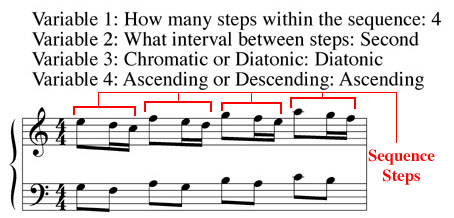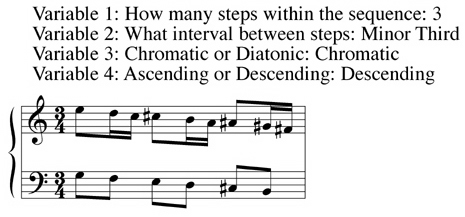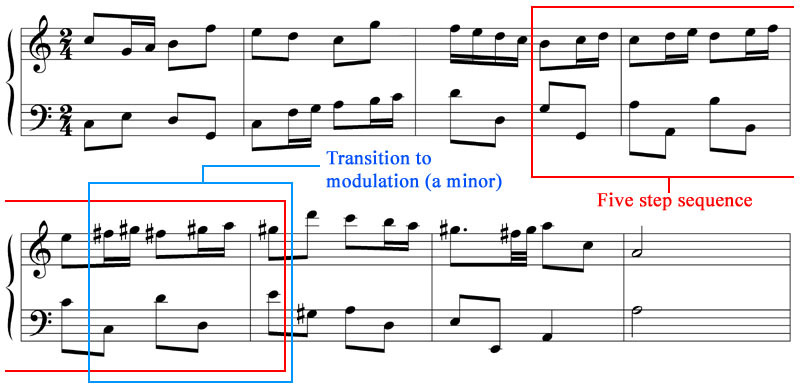The sequence is a useful tool to enable the composer to extend a brief musical idea, and, in so doing, bring to the composition a new direction. It is built from a synthesis of two basic manners of manipulating musical materials: repetition and transposition.
1. Initial Fragment. The musical material that can become a sequence may be of any length or complexity. However, to understand the principals of working with sequences, we will begin with a brief initial idea. Once our original material has been composed, a number of variables can be applied to it to generate a sequence:
Variable 1: How many steps will the sequence be? - or - How many reiterations of the idea will occur (including itself)?
Variable 2: What interval will separate the steps? - or - What level of transposition will be applied to each reiteration?
Variable 3: Will this be a chromatic or diatonic sequence? - or - Will the transpositions be chromatic or diatonic?
Variable 4: Will this be an ascending or descending sequence (direction of the transpositions)?
2. Diatonic Sequence. In this type of sequence, each step is transposed by degree within the key rather than by the exact intervallic makeup of the initial fragment.
example a)
example b)
3. Chromatic Sequence. In this type of sequence, each step is transposed by the exact intervallic makeup of the initial fragment. This will often lead the listener away from the original key region from which the sequence began.
4. Modulating Sequence. It is important to understand that neither the chromatic or the diatonic sequence approaches are mutually exclusive: often composers will chromatically alter the final step (or more) to effect a modulation, while keeping all of the previous steps in line with the diatonic paradigm.
In the following example we have incorporated a version of the sequence material that we have been using in the previous illustrations into the context of a sample composition that needs to modulate from C major to the relative a minor. Note that the five-step sequence begins diatonically before the last two steps chromatically articulate pitches from the new key (preparing a secondary dominant). As well, the sequence ends with a quasi-step on the downbeat of bar 6 - in other words, it appears as if the sequence is going to continue with another step but breaks off into free material at this point.







